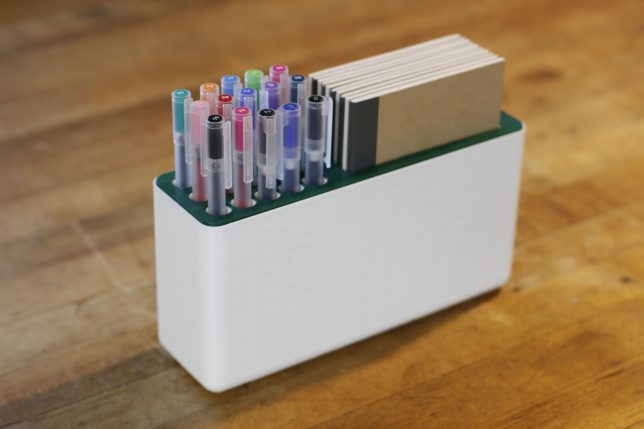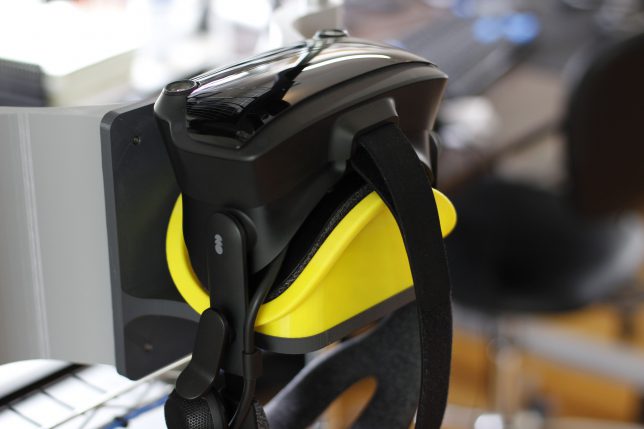There have been a few posts on this blog about the functional benefits of using printed parts to join existing objects in a reliable and precise way. Most of the time my printed parts themselves look strange. The goals are usually printability and a clean assembly of printed and non-printed. As an attempt to buck this trend, I recently designed and manufactured a desktop organizer that showcases the medium’s ability to bond objects and also look great.
Year: 2020
A 3D printed solution for storing a Valve Index on a wire shelf
Looking for a wall mounted version of the HMD mount? Check out this remix on thingiverse (thanks Sean)!
Here’s a video going over the design:
The printed parts can all be found on thingiverse here. Please let me know if you use any of these! I’d love to talk about potential improvements that could be made.
Quickly drawing grids of rectangles, and updating their colors with VisPy
Here’s a demo run of the code:
Background
From the VisPy website:
VisPy is a Python library for interactive scientific visualization that is designed to be fast, scalable, and easy to use.
While looking for a near real time data visualization alternative to the venerable matplotlib, I came across this jaw dropping demo:
Absolutely insane, achieving that kind of performance in python is amazing to say the least. This demo in particular seems like it would be more likely to come from a pygame application at the least, but looks more like it would be a Unity project.
The VisPy project is massive, but luckily, there is a set of really good examples included in the repo. Reminds me of the Arduino standard library in this way. After through all of running these, I didn’t find exactly what I was looking for.
For how simple the finished product looks, the learning curve on the way there was surprisingly steep. Hopefully this post saves you some time.

